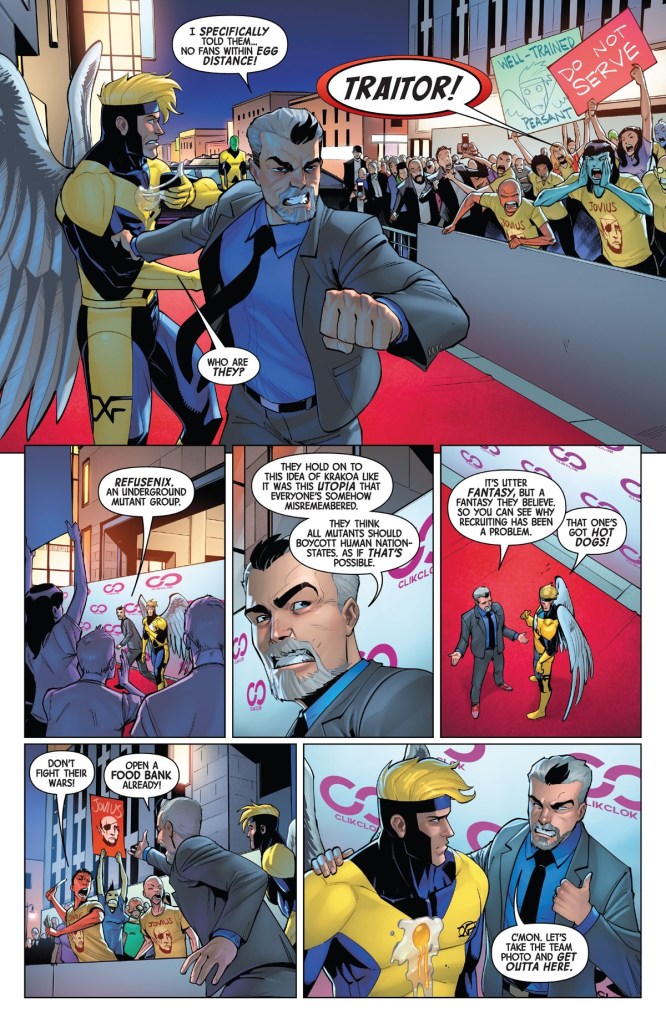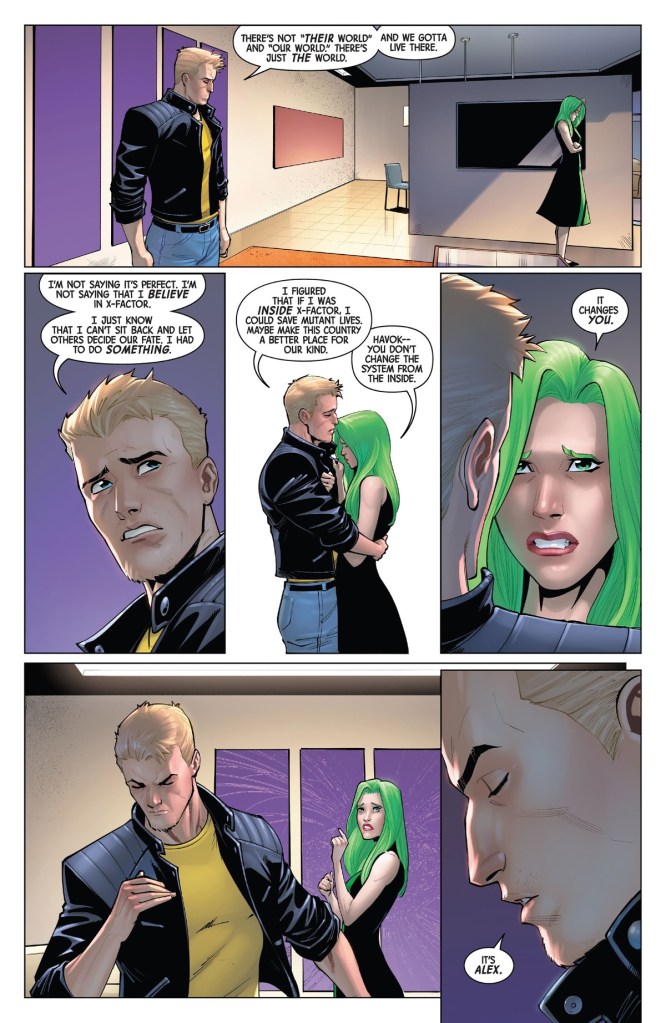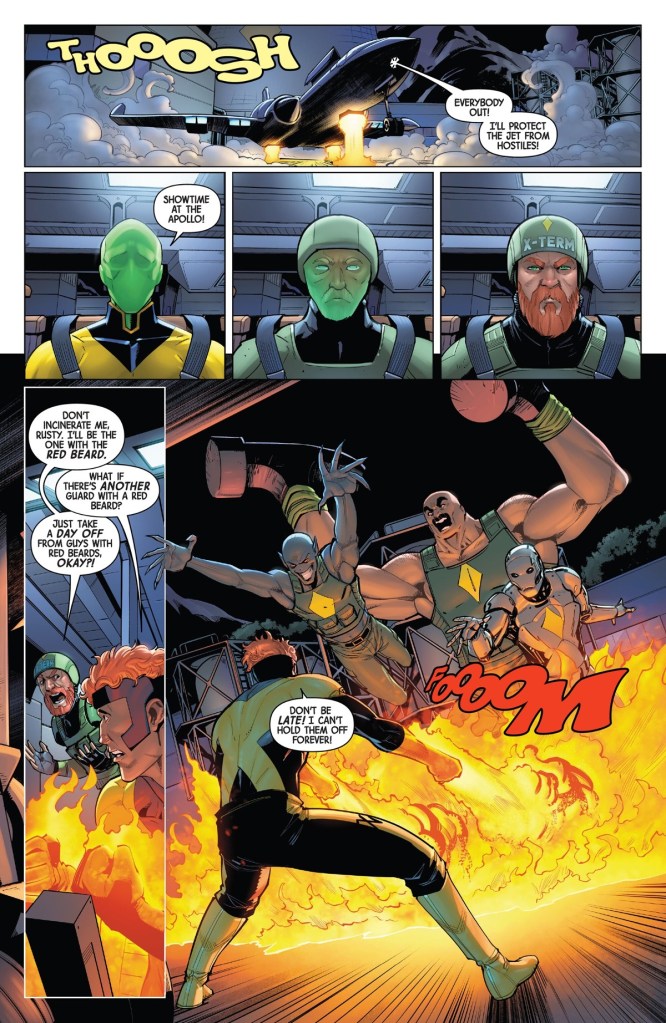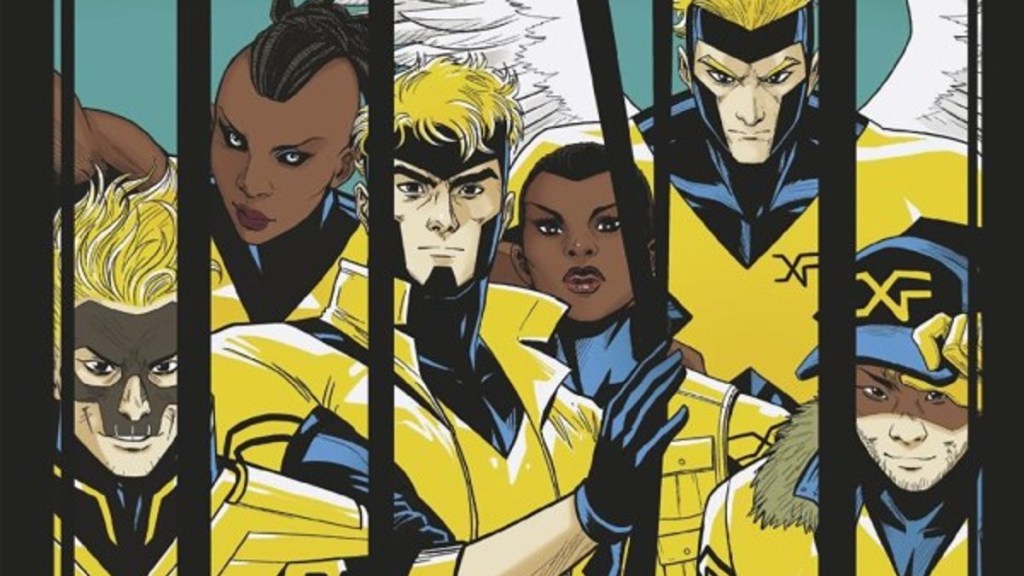In the wake of the Fall of Krakoa, Mutants have an image problem. The world at large still hates and fears those born with superpowers, despite everything they have to offer. X-Factor #1 explores how several people try to turn these problems into opportunities. It also showcases how truly absurd our world and the world of Marvel Comics can be.

The new X-Factor team is the brainchild of television producer Rodger Broderick. The mind behind such shows as Jail Chef and Marriage Ape, Broderick suggests the United States reform the government-sponsored X-Men squad. Noting that the two things America does best is produce entertainment and execute military maneuvers, Broderick proposes a fusion of the two – “soldier-tainment.” This will improve the image of both Mutant heroes and the United States, while making a lot of money in the process.

Unfortunately for Broderick, none of the popular X-Men want anything to do with his scheme. Beyond the unseemly reputation of the original X-Factor, the new team is viewed as sell-outs and traitors to Mutantkind. Most see the team as a cynical attempt to put a happy face on a government that has tried to exterminate them when it couldn’t exploit them. Unfortunately, any chance the team has to address this is drowned out by commercials for their sponsors.
X-Factor is X-Men meets Justice League International

The writing here invites comparison to the Justice League comics of Keith Giffen and J.M. DeMatteis. Beyond Rodger Broderick being a Maxwell Lord figure, there is some brilliant satire of X-Men comics in specific and clout-chasing culture in general. Of course earlier X-Men comics explored the idea of a Mutant hero reality show, but not with the acidic accuracy of Mark Russell‘s scripting.

Disney+ Has the Best Bundle in the Business
Sign-up today for access to Disney+, Hulu, and ESPN+
Sign-ups support Superhero Hype
via affiliate commission
However, there is a heart beneath the humor. The best scenes center around Havok and Polaris, two star-crossed lovers seeking a fresh start. Unfortunately, Havok thinks that fresh start should entail building bridges and joining the new X-Factor, whereas Polaris has no desire to play hero to the public.

The artwork by Bob Quinn is equally excellent. There is a unique clarity to Quinn’s character designs, making them all distinctive. This is important given how most of the cast is blonde men with similar cowls and haircuts. (Indeed, there’s a joke about how interchangeable they are visually.) The action scenes are also well-choreographed and the colors of Jesus Aburtov are suitably eye-catching.

With its heavy use of humor, X-Factor #1 may not be everyone’s cup of tea. Ironically, it may be an easier sell for those reluctant to give any X-Men comic a try, as it doesn’t fit the franchise’s usual mold. However, with amazing artwork, and a solid story that delivers feels as well as laughs, it is well worth reading.
Grade: 5/5
X-Factor #1 is now available at comic shops everywhere.







